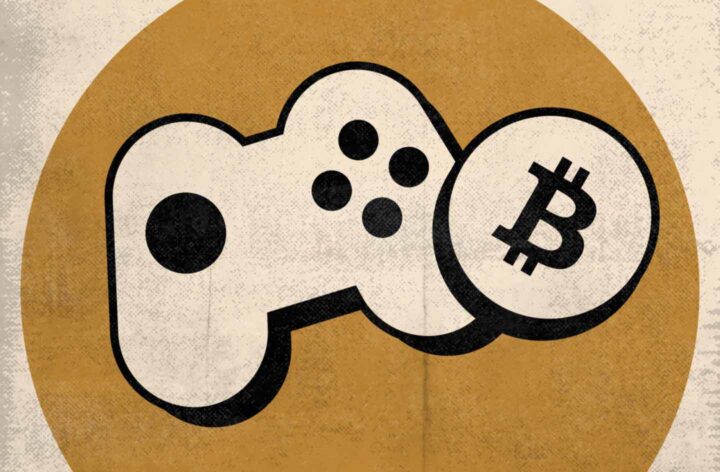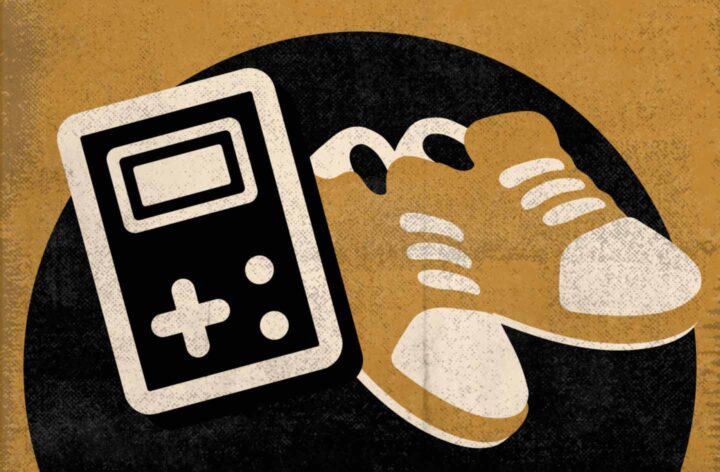GameFi: Video Games and Cryptocurrency

Let’s find out what GameFi projects are and how they differ from classic video games.
GameFi: Origin History

The first time people talked about the changes in the video game industry via crypto was three years ago. During the Wuzhen World Blockchain Conference in 2019, Jade Zhang, CEO of MixMarvel, called cryptocurrencies a technology that “will boost the gaming industry.” He predicted the imminent success of blockchain gaming.
The term GameFi was first used in 2020 by Andre Cronje, Founder of the Yearn.Finance DeFi lending protocol. He used it in the context of describing games with blockchain-based financial instruments.
Despite the relative novelty of the concept, similar technology was used in some games back in 2013. For example, there was a game called Bombermine on the Minecraft server, whose mechanics allowed players to monetize their experience by integrating BTC. Also, the online game Huntercoin provided users with an opportunity to mine cryptocurrencies.
The biggest step in developing the blockchain gaming and GameFi industries was the creation of Ethereum in 2015. The versatility of blockchain technology made it possible to integrate crypto-assets into various apps, including video games. For instance, the popular online game CryptoKitties appeared in 2017, in which in-game assets became non-fungible tokens (NFTs) of the ERC-721 standard.
Due to the features of the software environment, Ethereum became the backbone of the GameFi sector. However, the popularity of P2E projects caused the GameFi industry to grow and resulted in a heavy load on the Ethereum network. This, in turn, led to increased fees. So, gamers and game developers focused on “Ethereum killers” that could provide fast and cheap transactions. At the time of writing, approximately 40% of P2E games from the top 20 by DappRadar use Ethereum, another 25% are created on BNB Chain or WAX, 15% are based on Polygon, and the remaining 20% are built on Flow, Solana, Immutable X, and other blockchains.
It’s worth noting that today’s GameFi projects are often available on multiple blockchain networks at once. The popular game DeFi Kingdom is a cross-chain protocol on Harmony, Avalanche, and DFK Chain. The Sandbox metaverse uses Ethereum and Polygon blockchains, and Alien Worlds uses WAX and BNB Chain.
GameFi Projects Vs. Classic Video Games

Here are the key differences between GameFi projects and classic video games:
- Income opportunity. NFT technologies underlying GameFi projects allow users to enter the cryptocurrency market. In-game items such as NFTs can be profitably sold, and you can even make a profit after further resale. Besides, rewards for experience and achievements in blockchain games are accrued to players in in-game tokens, many of which can also be exchanged for fiat or other cryptocurrencies.
- Decentralization. Classic video games are either subscription-based (pay-to-play) or conditionally free-to-play. Still, the vast majority of them involve the option to buy additional benefits and items from the game creators to improve gameplay. Such items can also be bought from other players, but all of them are stored on centralized servers of creators or developers. So, they’ll never be completely owned by the player who bought them. In turn, blockchain games imply using cryptocurrency assets and NFTs, i.e., all in-game items and currency are stored in a crypto wallet and belong to the user.
Types of GameFi Projects

Games in the GameFi sector can be roughly divided into three main types:
- Free-to-Play. These games are free-to-play and focus more on the process than on generating profit. However, the player can buy various benefits and earn money with the help of cryptocurrencies. The F2P gaming sector is free online multiplayer games, most of which have no in-game tokens. Such games don’t feature built-in mechanics to monetize the gameplay experience, although in-game artifacts in the form of NFTs can be sold. In this sense, blockchain-based F2P projects are similar to classic ones.
- Play-to-Earn. P2E projects include all blockchain-based games for monetizing the game experience using built-in mechanics. Such projects offer ways to earn in-game tokens during gameplay, trade them, as well as receive in-game items or even characters in the form of NFTs.
- Move-to-Earn. These projects provide a way to monetize the physical activity of users. We described their features in detail earlier.
What Affects Your Profit

Income in GameFi projects depends on a variety of factors, including:
- The overall state of the cryptocurrency market. Current market trends affect the prices of in-game tokens and NFTs.
- Player performance. Earnings in P2E projects often depend directly on the amount of time the player is willing to devote to the game process and their skills.
- Game limitations. Blockchain game developers set limits; for example, on the daily rewards you can get or the amount of “energy” you need to earn.
- Rewards in games. The rewards that can be obtained for certain game achievements also play a role. For instance, Axie Infinity rewards can range from 3,000 to 5,000 AXS (~$19,000 to $32,000).
- Initial investments. The level of initial investment required influences your profit in P2E projects. The lower the entry threshold, the faster the player will be in the black and will make a profit.
The popularity of P2E projects as a profit-making tool made it quite challenging to earn money on your own in such projects. As a result, players began teaming up in game guilds. Such associations can have a huge number of participants. For example, UniX Gaming Guild is one of the largest guilds, with over 200,000 members and 41 blockchain games.
GameFi guilds became a crucial part of the in-game economics. Their main goal is to increase the liquidity of games, thus helping to attract investments into GameFi projects and increasing the popularity of blockchain games. Guild members support new players with advice and can even give them access to in-game artifacts to help them develop their game character faster. Thus, GameFi guilds seek to interest new players by showing them all the benefits of the game.
This approach is what encourages venture capitalists to take an increased interest in the blockchain gaming sector and GameFi guilds in particular. For example, major American venture capital fund, Andreessen Horowitz, invested $4.6 million in the Yield Guild Games community in the summer of 2021, attracting a total of $22.4 million in venture capital. NFT game operator Animoca Brands and venture capital firm Brinc announced a $30 million Guild Accelerator Program in early 2022 to support GameFi guilds.
The popularization of making money in popular blockchain games raised the entry threshold for new users. GameFi guilds can provide newcomers with the tools they need to play for a percentage of the tokens they earn. The Meta DAO Guild platform allows NFT owners to rent it to other users, and the renter gets access to NFTs without having to make a down payment or give anything as collateral. Here, the GameFi guild serves as a guarantor, using smart contracts that automatically charge a rental fee based on game income.
Disadvantages of GameFi Projects

While blockchain and cryptocurrencies bring big changes to the gaming industry, driving the development of the GameFi sector, the segment comes with some disadvantages as well:
- Chasing profits. Video game developers start to sacrifice the quality of their products in favor of profitability.
- Poor in-game economics. Many P2E games’ profitability depends directly on new players, whose investments create a liquidity pool for in-game tokens. But this dependency is dangerous because as interest in the game decreases, so does the liquidity pool. Some experts even call this dependency a sort of Ponzi scheme.
- Weak tokenomics. Many gaming projects with money-making opportunities appear in the market, but their tokenomics is unstable. For example, there are no mechanisms for burning or managing the issue of in-game coins.
- Monotony. The popularity of earning real money from video games led to an overflow of monotonous games with similar mechanics. Although these games allow you to make money (often very little), they’re boring.
- Many bots. Studies have shown that bots generate about 40% of activity in every P2E game.
- Distrust by gamers. Blockchain games remain a niche pastime. Half of gamers haven’t even heard of them, and the other half expresses no desire to play these games, preferring the opportunity to earn money to the interesting gameplay of classic games.
Notwithstanding the shortcomings, the GameFi sector continues to grow, attracting more and more money. Venture capital investment in blockchain games and Metaverses totaled $1.3 billion in Q3 2022 alone. Moreover, new mechanics, such as Learn-to-Earn (L2E), are constantly emerging to diversify the gaming experience and make it worthwhile.











